#amphicarpaea bracteata
Photo
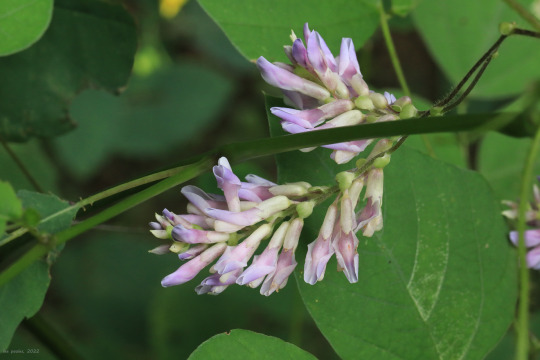



American hog peanut (Amphicarpaea bracteata), a shade-tolerant annual vine in the pea family (Fabaceae), is one of Nature’s great “nitrogen-fixers” - plants that store nitrogen in their roots with the help of symbiotic bacteria and then release it into the soil when they die, thus enriching the earth for other plants. In addition to its nitrogen-fixing qualities, American hog peanut produces an edible ground nut, along with non-edible seed pods that resemble typical pea pods. This lovely twiner blooms in mid to late summer in Central Appalachia and serves as a valuable food source to game birds, such as bobwhite quail, and rodents, such as the white-footed mouse and meadow vole
#appalachia#vandalia#west virginia#pea#legume#fabaceae#amphicarpaea bracteata#american hog peanut#mon river trail
68 notes
·
View notes
Text
Wildflower Mysteries Along The South Fence...
Wildflower Mysteries Along The South Fence…
Humulus lupulus (Common Hops) on 9-2-22, #908-14.
Hello everyone I hope this post finds you all well and enjoying the cooler temperatures. I have been enjoying the cooler temps, but that means wildflower hunting for the year is coming to an end. I suppose that is OK for a while. That means I can update the plant pages and add new pages for what was discovered in 2022. I added 47 new species for…
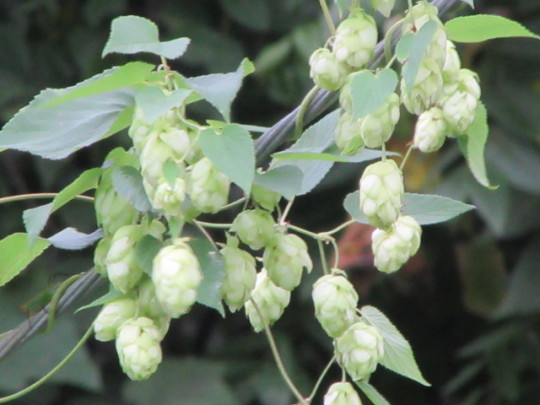
View On WordPress
#Amphicarpaea bracteata (American Hog Peanut)#Fallopia scandens (Climbing False Buckwheat)#Humulus lupulus (Common Hops)#Pisaurina mira (American Nursery Web Spider)#Toxicodendron radicans (Poison Ivy)
0 notes
Text
(Not comprehensive) What to expect for riparian zones in orv confluence.
it’s the best time of year to fen hop here in Ohio but before anyone does that a pilgrimage to a less addressed habitat is necessary and fun, its check on mudflats in western Ohio time;
I just spent a few solid days botanizing some of Ohio’s most classic habitats.
Two mudflat locations: Little Miami meets ORV and Great Miami meets ORV. (though a weirder one is the ancient oxbow flats of the Great Miami. BTW ORV is Ohio River Valley.
A group of really good friends and I got together and tried to hit the Shawnee lookout giant ragweed thickets(15 foot tall this year with native amaranth mixed in at similar height) Each year a few people check this spot earlier and than a few later for a tricky plant not seen since 2010 called Orobanche riparia
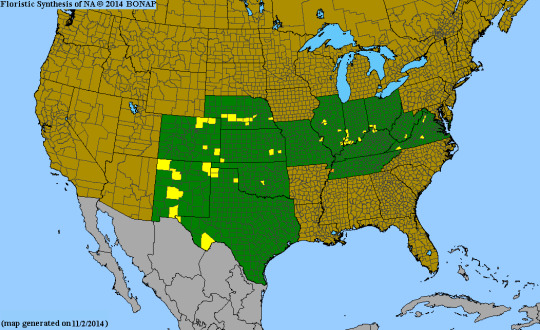
which may or may not be state extirpated from TN WV VA and OH. these are only affiliated with confluence zones and specifically Ancient ragweed thicket communities. Normally Ragweed is 7 foot max, and dies every year, falluvium(alluvium displaced by frequent floods), buries these past frost lines and their roots are insulated. and the stems are more supported at the base.
while being a classic rare species, Japanese hops have now made it extremely problematic to spot and so it remains elusive.
while the 3 giant amaranth and 8 species of Persicaria are present with the cockerburl and ragweed along with florida and giant lettuce; It’s also notable that rough barnyard grass and two other river bank giant ragweed thicket rarities are also present. https://explorer.natureserve.org/Taxon/ELEMENT_GLOBAL.2.155128/Ripariosida_hermaphrodita virginia riverbank mallow and ....

Nabalus crepidineus
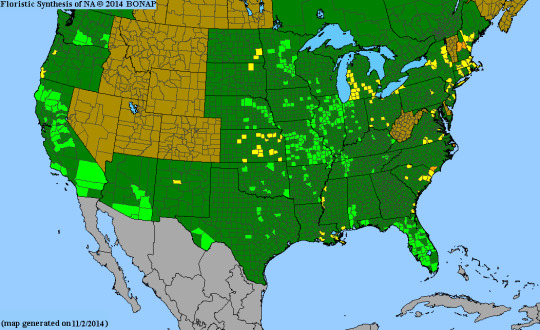
Flood plain woods: wood nettle, greenheaded cone flower, panicled fall phlox, cup plant, Jerusalem artichoke, 2 Persicaria spp., more angry hops, 2 common Rubus spp. (black cap and Alleghany), Monarda serotina, more lettuce, both of Ohio’s jewel weed.
Silt formed Mudflats:
It’s ok though because the disturbance is still frequent in some sections and many rare sedges and rushes exist as well as mud flat species can be seen as preserved. These are very small species that thrive on silt
the map above is for a species that recently got split again after already being split from drummunds’ bull rush. Now called dwarf bull rush and went through a new genera name too. River dwarf bull rush is no longer Hemicarpha micrantha and is now Lipocarpha micrantha.
Others of notable interest in flat: Kyllinga pumila, Paspalum fluitans, Myosurus minimus(adventive), Cyperus acuminatus,
both toothleafs are present too. Ammania coccinea(sessile peduncle and least common) and Ammania robusta(most common) for ohio.,


another classic forbe thats pretty darn common is obi wan conobea usually with carolina geranium not far apart,
green, dentate, davids, prostrate, true spotted, and Phyllanthus caroliniensis along with multiple copper leaves are present.
(plenty of other sedges but I can’t think of all the ones Dan Boone has tried to teach me there.)
Broken bank( sand cut banks):
alleghany monkey flower, blue siphilis lobellia, indian tobacco inflated lobellia, common milkweed, 3 uncommon Rubus spp. all adventive except for one that looks like a glaberous prickily virginia creeper vine Rubus trivialis . We also see both swamp and ciliate margin loose strife, two figworts, and cockerburl again along with 4 native persicaria, 2 native day flower(Commelina spp.), 3 seedbox/ludwigs (Ludwigia spp.), waterspeedwell Veronica catenata ,
mints are well represented: 3 Stachys spp. water hoarhound, american germander, 3 potential Monarda spp. (bubblegun, basal white, and M. serotina), both ciliate and hairy wood mints.
Classic creeping fabaceae are: Amphicarpaea bracteata and Apios americana.
Gravel point bar:
lance leaf frog fruit, smooth scouring rush, verticilate scouring rush, and rough scouring rush, smooth rush, green bull rush, the brown tall giant one, 3 sided rush, big bluestem? some how?, button bush, both the common hibiscus, sand bar and black willows, water willow(not a willow), lizard tail(the fruitloop smelling one).
Note:
If you want someone who knows more about this habitat than anyone else, Dan Boone is probably the person to ask.
10 notes
·
View notes
Video
youtube
Amphicarpe bractéolée/American Hog Peanut (Amphicarpaea bracteata)
0 notes
Photo
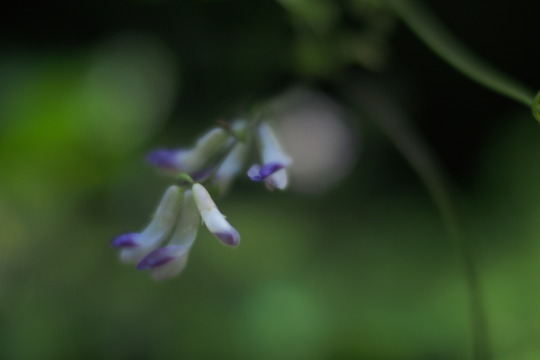
0 notes
Text
Subterranean Treasures: the Beneficial Roots of Native Vines
By Angela Magnan
As I pulled into the parking lot next to the native plant collection at work one day, I noticed our intern up in a tree cutting down a native honeysuckle vine. Uh-oh, I thought. Not again! Working at a public garden, our attempts to grow vines can often be frustrated by well-meaning visitors and volunteers, and yes, overly enthusiastic interns, who automatically think that all vines are weeds and cut or pull out the vines we have planted there.
One strategy to avoid such tragedies is to plant vines that are less obtrusive and that produce underground structures from which they will resprout. One such vine is Apios americana, or groundnut. This leguminous, sprawling perennial vine grows up to 10 feet long and produces clusters of maroon pea-type flowers. Used by native peoples east of the Mississippi as a food source, it has both edible seeds and edible tubers. The seeds are in long pods that can be harvested in the fall when dry and contain as much protein and fiber as pinto beans. Although not commonly grown in the US, it has been commercially farmed in Japan for more than a hundred years.
The tubers, which grow every 10-12 inches along the rhizomes, need to be cooked and can be eaten in similar ways to potatoes. Research has also shown that dried and powdered tubers have some promise as an additive to gluten free bread products, increasing the protein content and improving the texture. If you harvest the tubers, the plant won’t come back, but it does seed around; you can maintain its presence in your garden by harvesting sparingly. The tubers are a good source of proline, an amino acid that helps build collagen. Groundnuts have been made into a poultice and used by New England tribes to treat proud flesh, a skin condition caused by inadequate healing of wounds that is particularly common in horses.
Another native vine with a subterranean edible is hog peanut or ground bean. Also a legume, this is a great plant for botany geeks. Its scientific name, Amphicarpaea bracteata, refers to its production of more than one type of flower, a characteristic known as amphicarpy. It has two types of aboveground flowers and a third type underground. One of the aboveground flowers and the underground flower are cleistogamous, meaning they are permanently closed and self-fertile. The second aboveground flower is a delicate white or light purple pea-like flower that is pollinated by bumblebees. This annual or short-lived perennial produces edible underground seeds, but the aboveground seeds are not edible.
In the wild, this plant typically grows along streams and given enough moisture in the garden, it can run rampant and smother nearby plants. If grown strictly for ornamental purposes, this could be undesirable, but if you want to eat the seeds, you can harvest it aggressively and it will still come back. Because it gets a late start during the growing season, it is a great companion for early spring plants that go dormant by mid-summer. If it has something to twine around, it will, but it will also sprawl along the ground as a groundcover.
In the US, Cherokee and Iroquois people used the plant for intestinal distress. The Cherokee also used it as a snake bite remedy and the Iroquois used it to treat tuberculosis. In Mexico, indigenous peoples grow it amidst maize and beans, allowing it to twine up the maize stems and intermingle with the climbing beans. Referred to as talet beans, they harvest the underground seeds in early spring before planting that year’s maize crop and then roast the beans as a snack. The aboveground seeds are plowed into the soil for next year’s crop.
Yet another native vine with useful underground structures is Dioscorea villosa, a wild yam whose tubers contain diosgenin. In the 1940’s, scientists figured out how to synthesize human steroid compounds from diosgenin, a process that was then used to manufacture oral contraceptives and cortisone. Today scientists can synthesize diosgenin in the laboratory, but prior to 1970, wild yam was the sole source of diosgenin and most steroid hormones used in modern medicine were developed from this plant. Although diosgenin can be converted into such steroids in a lab, this process does not occur naturally and consuming wild yam would not have the same effect.
The flowers of Dioscorea villosa are inconspicuous, but it has attractive heart shaped leaves. Even though its long runners can lead it to pop up in unexpected places, it is not aggressive like some of its non-native relatives. The tubers have an unpleasant, bitter taste, and you wouldn’t want to eat them, but they have been used medicinally for various ailments. Native Americans used a root-based tea to treat menstrual cramps, labor pains, inflammation, asthma, and rheumatism. European settlers used it to treat colic, which led to one of its other common names of colic root. It continues to be used in modern herbal medicine as an anti-inflammatory, either dried in capsule form or as a liquid extract to be made into an herbal tea.
The best thing about all three of these vines is that if a well-meaning individual cuts one down, you might still be able to use the underground treasures or leave them be and let the vine grow back. And what about the native honeysuckle cut down by our intern? It was not so lucky; it never came back.
Photo credits: 1) Apios americana in August (courtesy of author); 2) Amphicarpaea bracteata flowers (Fritzflohrreynolds via Wikimedia Commons); 3) Amphicarpaea bracteata foliage (R. A. Nonenmacher via Wikimedia Commons); 4) Dioscorea villosa twining up hemlock (courtesy of author)
References:
Foster, S. & Johnson, R. (2006). Desk reference to nature’s medicine. National Geographic.
Frey, D. & Czolba, M. (2017). The food forest handbook. New Society Publishers.
Ichige, M., Fukuda, E., Miida, S., Hattan, J., Misawa, N., Saito, S., Fujimaki, T., Imoto, M., & Shindo, K. (2013). Novel isoflavone glucosides in groundnut (Apios americana Medik) and their antiandrogenic activities. Journal of Agricultural and Food Chemistry, 61 (9), 2183-2187. https://pubs.acs.org/doi/10.1021/jf305233t
Ito, S. & Arai, E. (2021). Improvement of gluten-free steamed bread quality by partial substitution of rice flour with powder of Apios americana tuber. Food Chemistry, 337, 127977. https://doi.org/10.1016/j.foodchem.2020.127977
Pena, F.B., Villalobos, G. Martinez, M.A., Sotelo, A., Gil, L., & Delgado-Salinas, A. (1999). Use and nutritive value of talet beans, Amphicarpaea bracteata (Fabaceae: Phaseoleae) as human food in Puebla, Mexico. Economic Botany, 53 (4), 427-434. https://www.jstor.org/stable/4256226
Salmon, E. (2020). Iwigara: The kinship of plants and people. Timber Press.
Schnee, B.K. & Waller, D. M. (1986). Reproductive behavior of Amphicarpaea bracteata (Leguminosae), an amphicarpic annual. American Journal of Botany, 73 (3), 376-386. https://bsapubs.onlinelibrary.wiley.com/doi/abs/10.1002/j.1537-2197.1986.tb12051.x
Medicinal Disclaimer: It is the policy of The Herb Society of America, Inc. not to advise or recommend herbs for medicinal or health use. This information is intended for educational purposes only and should not be considered as a recommendation or an endorsement of any particular medical or health treatment. Please consult a health care provider before pursuing any herbal treatments.
Angela grew up on a dairy farm in Vermont and has degrees in biochemistry, horticulture, and science writing. She now lives in Maryland and has worked in the Gardens Unit at the US National Arboretum since 2012.
Subterranean Treasures: the Beneficial Roots of Native Vines published first on https://marcuskeever.blogspot.com/
0 notes
Text

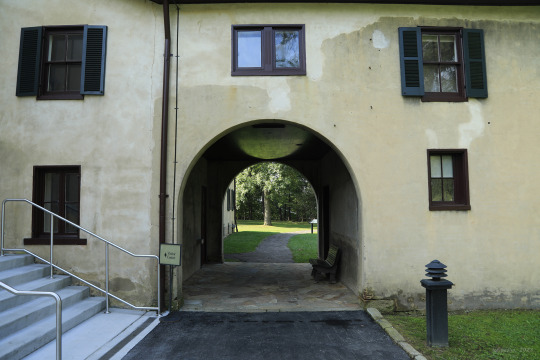
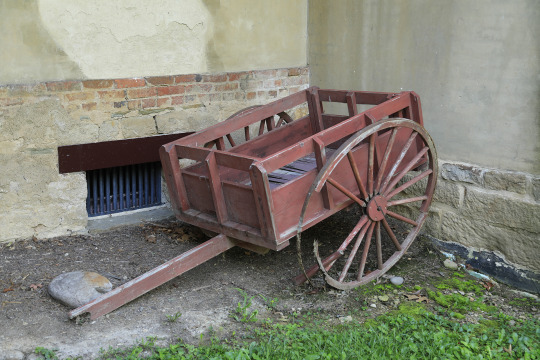


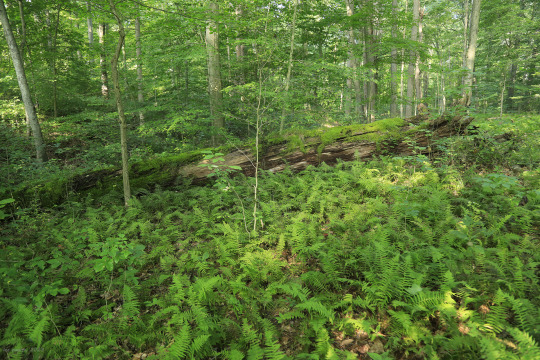

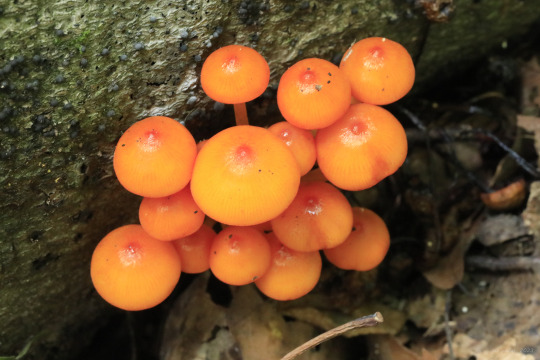
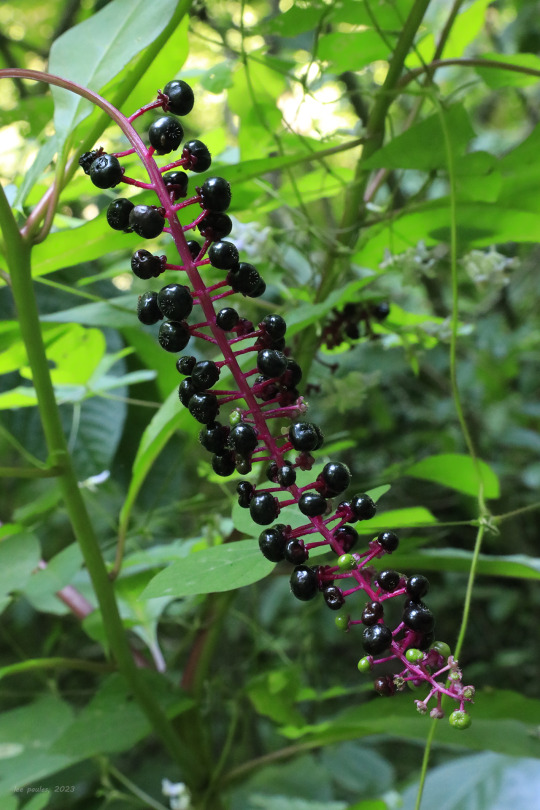
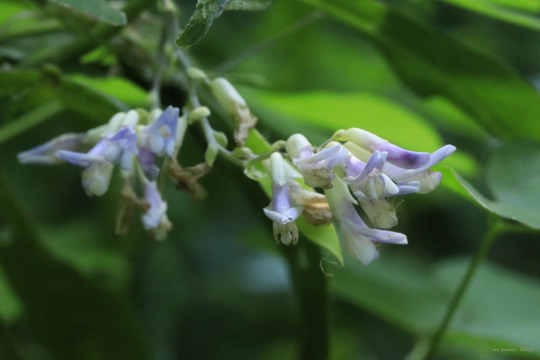

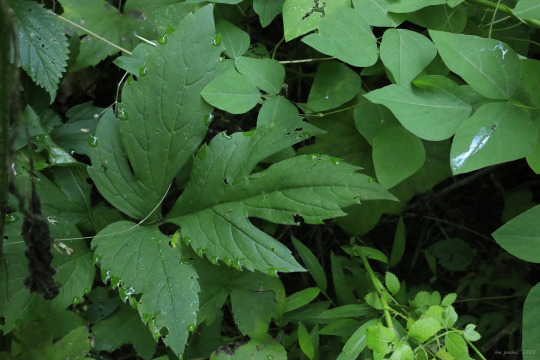
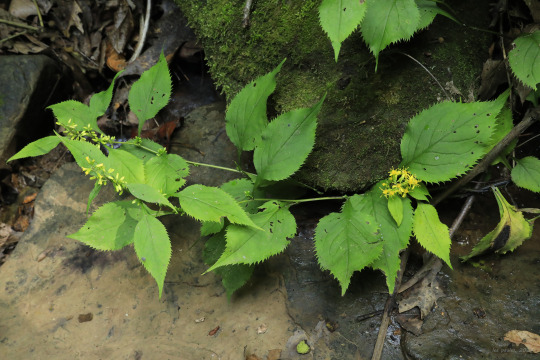
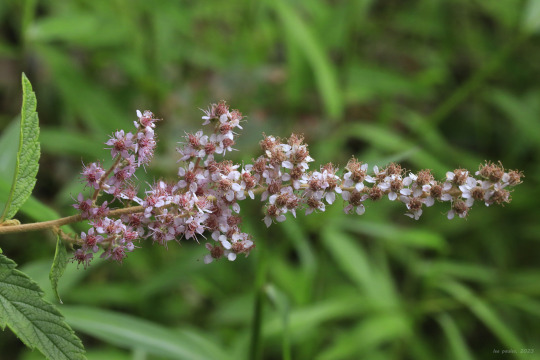
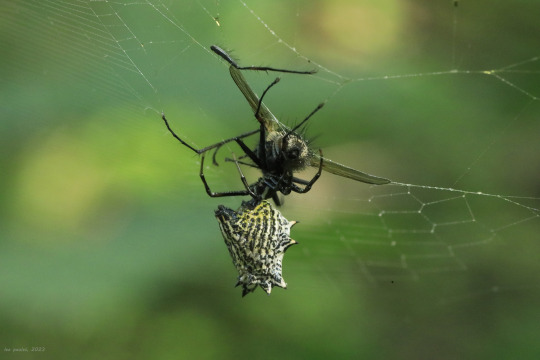

A few photos above from an early morning hike at the Friendship Hill National Historic Site near Pt. Marion, Pennsylvania. If you want to learn more about the history of this sprawling estate, you can go to this link or search for prior posts from the main search page of my Tumblr blog. In addition to the historic homestead of Albert Gallatin, the park features ten miles of hiking trails through verdant oak-hickory and riparian forests. This time of year, the Central Appalachian forest is rich with fungi, legumes, berries, and the loveliest orb-weavers imaginable.
From top: wingstem (Verbesina alternifolia), also known as yellow ironweed, a late summer aster so named because the petioles of its leaves run down the plant's stem; northern spicebush (Lindera benzoin), a gorgeous native shrub whose bright red berries in late summer are followed by the most extraordinary gold foliage in the fall; orange mycena (Mycena leaiana), a lovely, gregarious fungi of deciduous logs whose pigment has shown antibacterial and anti-cancer properties; the ripened but dangerously toxic berries of pokeweed (Phytolacca americana), whose young leaves are used by mountain folk to make poke sallet (but only after repeated cleansings to remove the toxins); American hog-peanut (Amphicarpaea bracteata), a lovely twining vine whose roots and ground nut are edible; cutleaf coneflower (Rudbeckia laciniata), also known as green-headed coneflower and wild goldenglow, a close relative of black-eyed Susan with gorgeous, pinnately-dissected leaves (the leaf photo also shows the characteristic tri-foliate leaf pattern of hog-peanut); zig-zag goldenrod (Solidago flexicaulis), one of two adorable woodland goldenrods that grow in this area (the other being blue-stemmed goldenrod), both of which produce clusters of brilliant yellow flowers in both their leaf axils and at the ends of their stems; steeplebush (Spiraea tomentosa), also known as hardhack, which produces delicate plumes of pink flowers in late summer; a spined micrathena (Micrathena gracilis), which has ensnared a fly in her web; and an arrowhead orb weaver (Verrucosa arenata), also known as a triangle orb-weaver, a sparkling gem of an arachnid that reels in its prey like a fisherman dragging in a net.
#appalachia#vandalia#wildflowers#flora#summer#arachnid#pennsylvania#friendship hill national historic site#fungi#orange mycena#wingstem#yellow ironweed#northern spicebush#pokeweed#american hog-peanut#cutleaf coneflower#green-headed coneflower#wild goldenglow#zig-zag goldenrod#steeplebush#hardhack#orb-weaver#spider#spined micrathena#arrowhead orb-weaver#triangle orb-weaver
23 notes
·
View notes
Photo


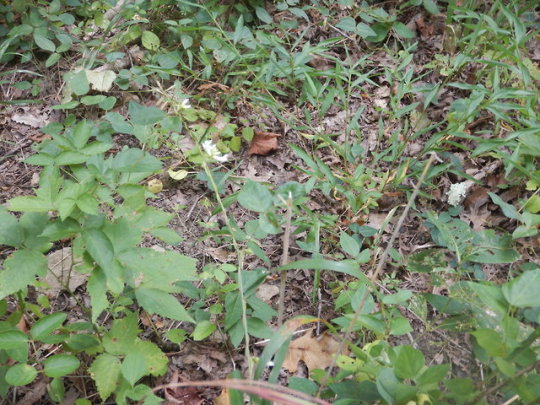
Amphicarpaea bracteata
White hog pea
20 notes
·
View notes
Photo
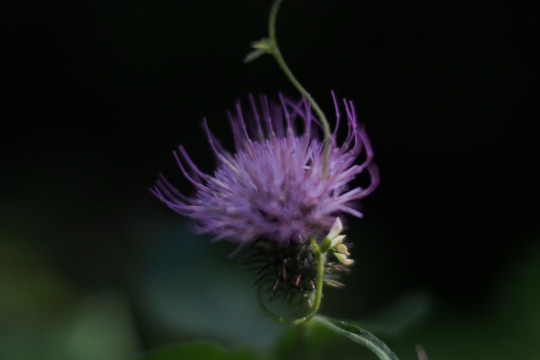
0 notes
Photo
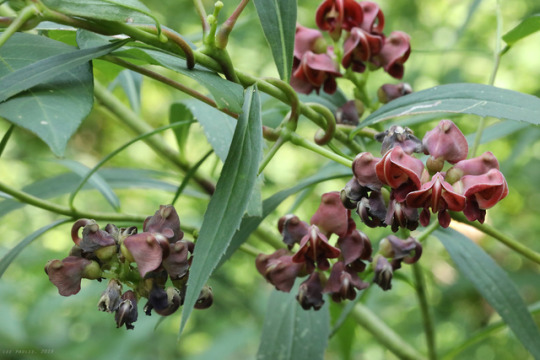
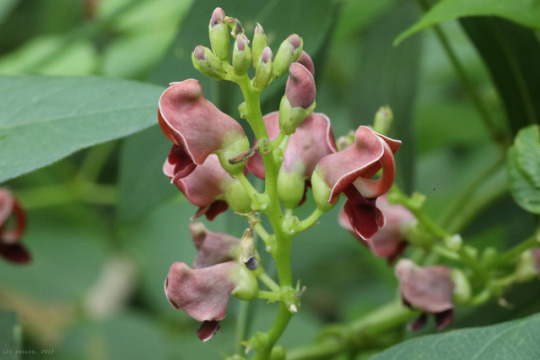
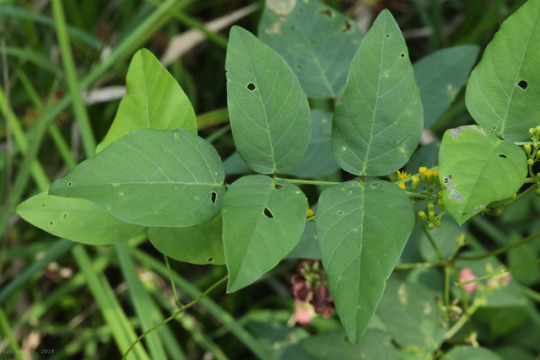
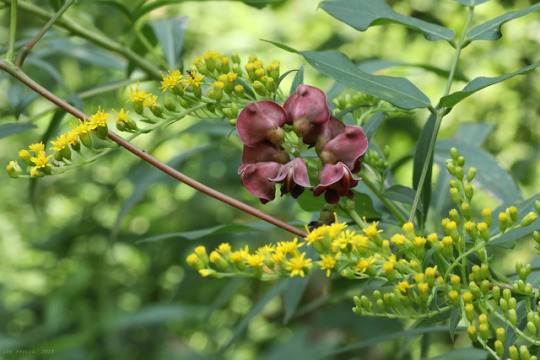
Potato bean (Apios americana), also known as Indian potato, wild bean, openauk, and hopniss, is a beautiful, vining legume native to the eastern half of the United Statues and Canada. Both the tubers (”potato”) and seeds (”beans”) of this perennial member of the pea family (Fabaceae) are edible and packed with protein; the plant was an essential food source for Native Americans and early white settlers and is a backcountry survivalist’s best friend. Someday, it may also play a key role in providing a sustainable food source to people around the world. As with its close relative and fellow native legume, American hog peanut (Amphicarpaea bracteata), potato bean is a nitrogen fixer, which means it grows quite well without fertilizer and enriches the soil for other plants growing around it. For me, however, potato bean is simply one of the loveliest finds of late summer in Appalachia - its clusters of five-parted, reddish-purple flowers and green-brown, twining stems signal that summer will soon come to an end. The photos above were taken on the Mon River Trail.
#appalachia#vandalia#west virginia#summer#wildflowers#legume#fabaceae#apios#potato bean#indian potato#wild bean#openauk#hopniss#mon river trail
46 notes
·
View notes